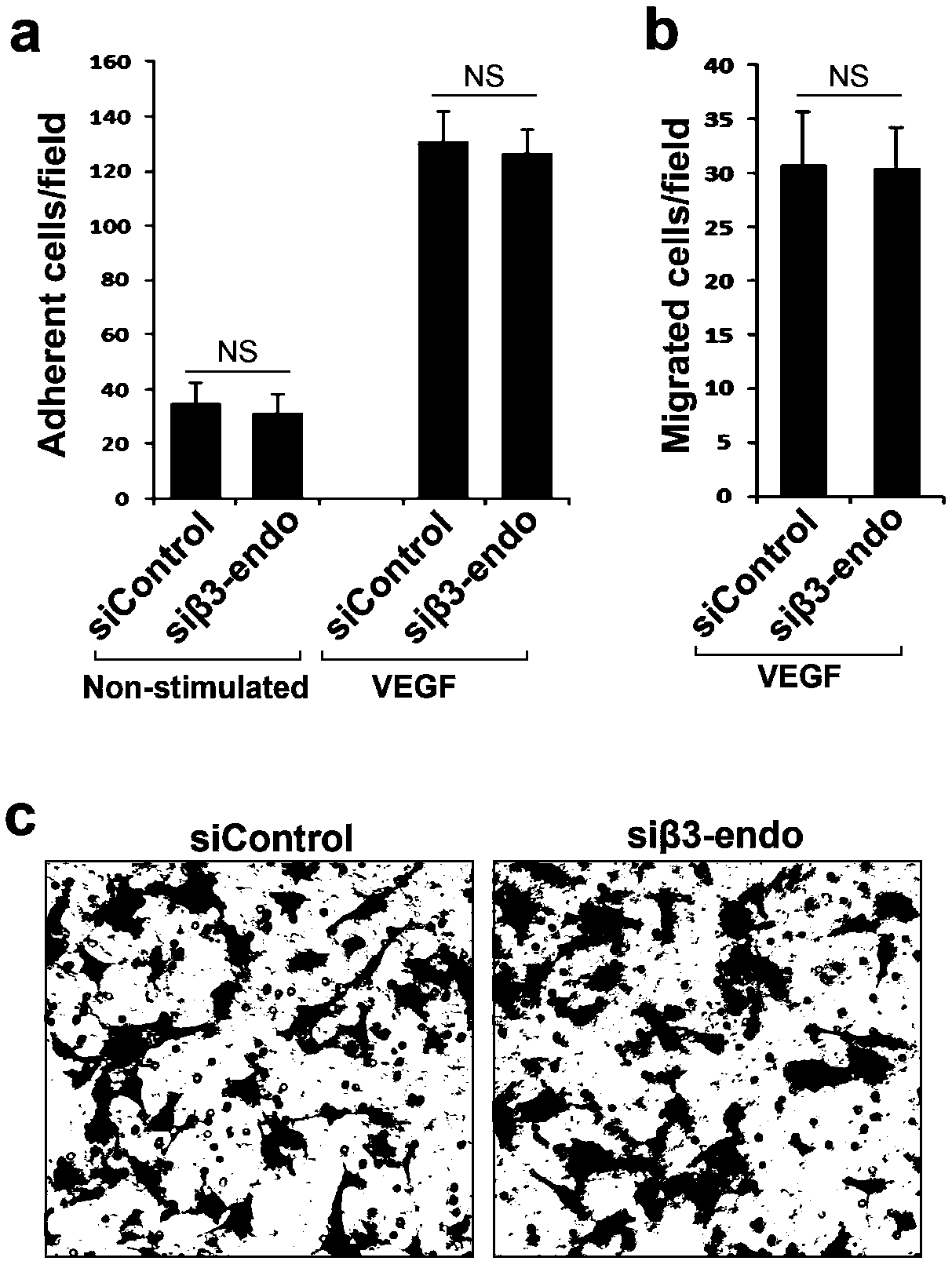Application of beta 3-endoxine protein factor as target molecule in regulation of neovascularization
A technology of protein factors and new blood vessels, applied in the field of biomedicine, can solve problems such as validity disputes and failures
- Summary
- Abstract
- Description
- Claims
- Application Information
AI Technical Summary
Problems solved by technology
Method used
Image
Examples
Embodiment 1
[0016]Example 1: Design and synthesis of control siRNA (siControl for short) and siRNA targeting β3-endonexin (siβ3-endo for short). These siRNAs were synthesized in Shanghai Gemma Company, and the sequence information of siControl and siβ3-endo are respectively
[0017] siControl:5'UUCUCCGAACGUGUCACGUTT3',
[0018] siRNA-β3-endo: 5'GAACUUGUCAAAUGAGUCU dTdT 3'
[0019] Design and synthesize mβ1CTP and mβ3CTP small molecule polypeptide compounds, and their respective amino acid sequences are:
[0020] mβ1CTP: YGRKKRRQRRRAVTTVVNPKYEG
[0021] mβ3CTP: YGRKKRRQRRRATSTFTNITYRG
Embodiment 2
[0022] Example 2: Human umbilical vein endothelial cells (HUVEC) blood vessel-like structure formation experiment
[0023] Human umbilical vein endothelial cells (HUVEC) cultured in vitro can self-assemble into a vessel-like pipeline structure on the basement membrane matrigel containing growth factors. siRNA (siβ3-endo) targeting β3-endonexin (siβ3-endo) and control siRNA (siControl) without targeting sequence were transfected into HUVEC respectively, and 48 hours later, HUVEC transfected with siβ3-endo and treated with siControl were collected and plated on pre-coated Matrigel cell culture on a 48-well plate, observe the formation of pipe-like structures in HUVEC under an inverted microscope, and count the number of formed pipe-like structures, see figure 1 , the results showed that compared with the control siControl treatment group, transfection of siβ3-endo group could effectively inhibit the formation of blood vessel-like structures in vascular endothelial cells, indicat...
Embodiment 3
[0024] Example 3: Adhesion experiment of human umbilical vein endothelial cells (HUVEC).
[0025] After the siβ3-endo targeting β3-endonexin and the control siControl without targeting sequence were transfected into HUVECs, the cells were incubated on a plate pre-coated with the β3-type integrin ligand fibrinogen (20 μg / ml) at 37°C for 30 minutes. Minutes, then fixed with 70% methanol, stained with 1% toluidine blue, and counted the number of adherent cells under a microscope. In addition, HUVECs were stimulated with vascular endothelial growth factor (VEGF) during the process of cell adhesion, and experiments and statistics were carried out in the aforementioned manner. see figure 2 a, The results showed that, compared with the control group, down-regulating the expression of endogenous β3-endonexin in HUVECs had no obvious effect on the adhesion ability of HUVECs.
PUM
 Login to View More
Login to View More Abstract
Description
Claims
Application Information
 Login to View More
Login to View More - R&D
- Intellectual Property
- Life Sciences
- Materials
- Tech Scout
- Unparalleled Data Quality
- Higher Quality Content
- 60% Fewer Hallucinations
Browse by: Latest US Patents, China's latest patents, Technical Efficacy Thesaurus, Application Domain, Technology Topic, Popular Technical Reports.
© 2025 PatSnap. All rights reserved.Legal|Privacy policy|Modern Slavery Act Transparency Statement|Sitemap|About US| Contact US: help@patsnap.com



